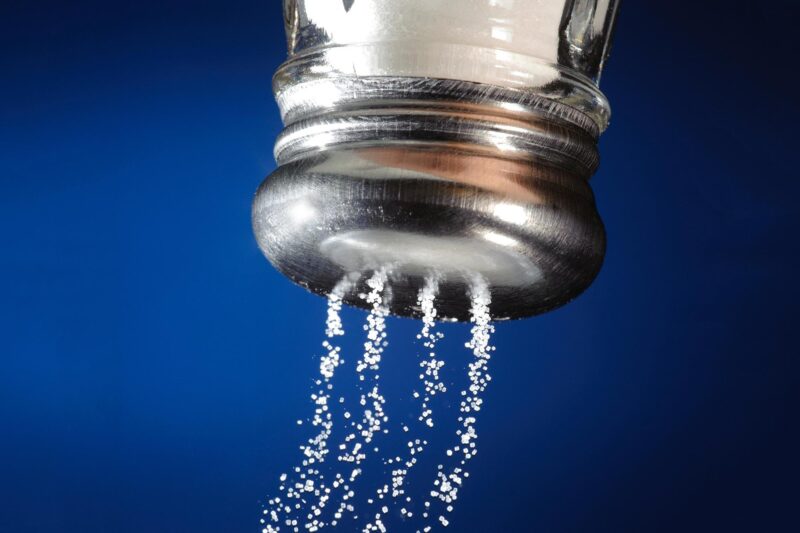Une étude révèle comment la réduction de l’apport en sodium peut aider les patients souffrant d’insuffisance cardiaque.
Des résultats surprenants montrent qu’un régime pauvre en sel n’empêche pas la mort ou les visites à l’hôpital, mais améliore les symptômes et la qualité de vie.
Au cours du siècle dernier, on a conseillé aux personnes souffrant d’insuffisance cardiaque de réduire leur consommation de sel, mais jusqu’à présent, peu de preuves scientifiques ont étayé cette recommandation.
Le plus grand essai clinique randomisé portant sur la réduction de la consommation de sodium et l’insuffisance cardiaque a donné des résultats simultanés en ;” data-gt-translate-attributes=”[{” attribute=””>The Lancet and at the American College of Cardiology’s 71st Annual Scientific Session over the weekend, and the findings were mixed.
Though reducing salt intake did not lead to fewer emergency visits, hospitalizations or deaths for patients with heart failure, the researchers did find an improvement in symptoms such as swelling, fatigue, and coughing, as well as better overall quality of life.
“We can no longer put a blanket recommendation across all patients and say that limiting sodium intake is going to reduce your chances of either dying or being in the hospital, but I can say comfortably that it could improve people’s quality of life overall,” said lead author Justin Ezekowitz, professor in the University of Alberta’s Faculty of Medicine & Dentistry and co-director of the Canadian VIGOUR Centre.
The researchers followed 806 patients at 26 medical centers in Canada, the United States, Columbia, Chile, Mexico, and New Zealand. All were suffering from heart failure, a condition in which the heart becomes too weak to pump blood effectively. Half of the study participants were randomly assigned to receive usual care, while the rest received nutritional counseling on how to reduce their dietary salt intake.
Patients in the nutritional counseling arm of the trial were given dietitian-designed menu suggestions using foods from their own region and were encouraged to cook at home without adding salt and to avoid high-salt ingredients. Most dietary sodium is hidden in processed foods or restaurant meals rather than being shaken at the table, Ezekowitz noted.
“The broad rule that I’ve learned from dietitians is that anything in a bag, a box, or a can generally has more salt in it than you would think,” said Ezekowitz, who is also a cardiologist at the Mazankowski Alberta Heart Institute and director of the U of A’s Cardiovascular Research Institute,
The target sodium intake was 1,500 milligrams per day — or the equivalent of about two-thirds of a teaspoon of salt — which is the Health Canada recommended limit for most Canadians whether they have heart failure or not.
Before the study, patients consumed an average of 2,217 mg per day, or just under one teaspoon. After one year of study, the usual care group consumed an average of 2,072 mg of sodium daily, while those who received nutritional guidance consumed 1,658 mg per day, a reduction of a bit less than a quarter teaspoon equivalent.
The researchers compared rates of death from any cause, cardiovascular hospitalization and cardiovascular emergency department visits in the two study groups but found no statistically significant difference.
They did find consistent improvements for the low-sodium group using three different quality of life assessment tools, as well as the New York Heart Association heart failure classification, a measure of heart failure severity.
Ezekowitz said that he will continue to advise heart failure patients to cut back on salt, but now he will be clearer about the expected benefits. He urges clinicians to recognize that dietary changes can be a useful intervention for some of their patients.
The team will do further research to isolate a marker in the blood of patients who benefited most from the low-sodium diet, with the aim of being able to give more targeted individual diet prescriptions in the future. The researchers will also follow up the trial patients at 24 months and five years to determine whether further benefits are achieved over the long term.
Reference: “Reduction of dietary sodium to less than 100 mmol in heart failure (SODIUM-HF): an international, open-label, randomised, controlled trial” 2 April 2022, The Lancet.
DOI: 10.1016/S0140-6736(22)00369-5
Meeting: American College of Cardiology’s 71st Annual Scientific Session
Funding: Canadian Institutes of Health Research, University Hospital Foundation, Health Research Council of New Zealand




